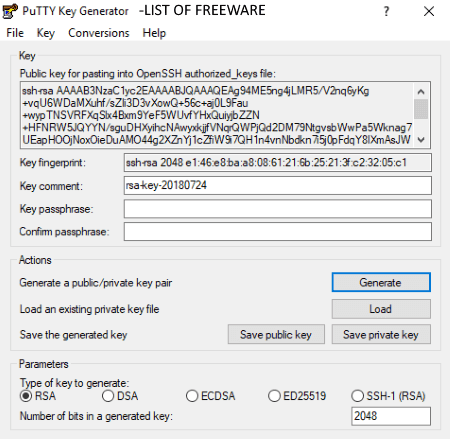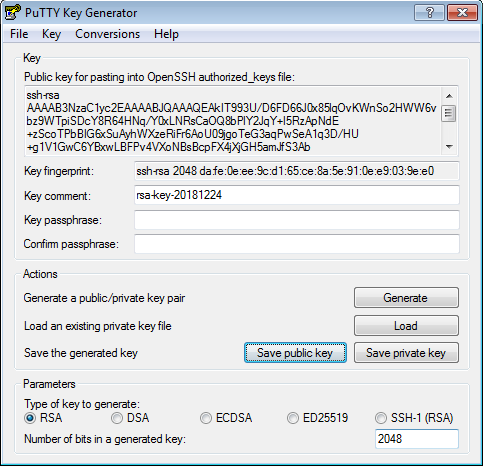The first link lets me verify a public key + message + signature combination. Do you know of some online site that will generate a signature given a private key and a message (just for playing around purposes of course - your fair warning is very apt). – thanksinadvance May 16 '17 at 1:05. The public keys are part of the key pair generation by each one of the parties, usually denoted Gen. With ECC the keys can be generated from the private key at any time, as the public key is generated after the private key within the Gen function, namely by multiplying the private key value with the base point G.
- Ecc Key Pair Generation Online Banking
- Ecc Key Pair Generation Online Banking
- Ecc Key Pair Generation Online Shopping
- Ecc Key Pair Generation Online Shopping
Self-signed certificates and Elliptic Curve Cryptography
There are many reasons to self-sign SSL certificates,but I find them particularly useful for staging sites and in the early stages of a project.
Generate an DSA SSH keypair with a 2048 bit private key. Ssh-keygen -t dsa -b 1024 -C 'DSA 1024 bit Keys' Generate an ECDSA SSH keypair with a 521 bit private key. Ssh-keygen -t ecdsa -b 521 -C 'ECDSA 521 bit Keys' Generate an ed25519 SSH keypair- this is a new algorithm added in OpenSSH. Ssh-keygen -t ed25519.
I have a three command guide to self-signing an SSL certificateif you aren’t interested in ECC.
If you are interested in ECC,you may know that the main reason for using elliptic curves as the basis for communication over SSL is the small key size –where regular DSA would require 1024 bits, ECDSA (the elliptic-curve variant of DSA) would require about 160 bits.The computational power required for communication over ECDSA is also less.
Ecc Key Pair Generation Online Banking
This is only likely to matter in embedded systems or other highly-constrained environments.

If you are considering specifically using an ECDSA certificate like the one generated here with OpenSSL,it is probably worth reading a more detailed description by Bruce Schneier.
If you are sure you want an ECC-based certificate,doing so is just as easy as any other self-signed certificate with OpenSSL,provided that your version supports ECDSA.The commands below have been verified to work on OSX 10.8.
OpenSSL commands
Ecc Key Pair Generation Online Banking

The first command is the only one specific to elliptic curves.It generates a private key using a standard elliptic curve over a 256 bit prime field.You can list all available curves using
or you can use prime256v1 as I did.
The second command generates a Certificate Signing Requestand the third generates a self-signed x509 certificate suitable for use on web servers.
Information:If you get a warning message from your browser, please ignore it. Dead rising 4 patch download pc. They (Googlebot) mistakenly think that some files on our Trainers section are 'malicious content' and have decided to randomly display warning messages when downloading files. Trainers are memory resident programs that alter the behaviour of a game. Your anti-virus software may detect them as malware (viruses, worms, trojans, bots etc.).
The check at the end ensures you will be able to use your certificate beyond 2016. OpenSSL on OS X is currently insufficient, and will silently generate a SHA-1 certificate that will be rejected by browsers in 2017. Update using your package manager, or with Homebrew on a Mac and start the process over.
Ecc Key Pair Generation Online Shopping
More on ECC
Ecc Key Pair Generation Online Shopping
If you’re interested in elliptic curve cryptography,Wikipedia has a good introduction that includes the math behind it,as well as more specific information on ECDSA in particular.As usual, there are good links from there to learn more.